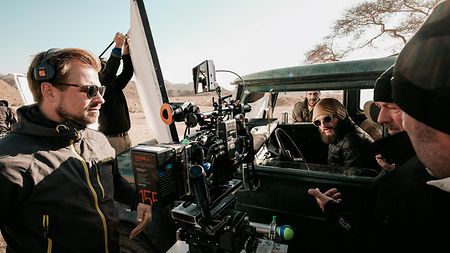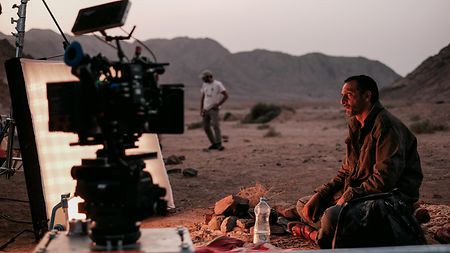It took writers/directors Stefan Sarazin and Peter Keller, along with producer Fritjof Hohagen, many years and multiple attempts to shoot their passion project "No Name Restaurant." But it was worth it in the end. The finished film was awarded numerous prizes even before its cinema release, including the Producer's Award at the Bavarian Film Awards, the Fritz Gerlich Award, and the One Future Award.
The film tells the story of Ben, an ultra-orthodox Jew from New York (Luzer Twersky) who gets lost in the Sinai desert on his way to Alexandria. Bedouin tribesman Adel (Haitham Omari) finds and takes care of him, and on their adventurous journey through the desert, these two men of different religions slowly get to know and appreciate each other. The moral of the story: prejudices can be overcome.
In this interview, DP Holger Jungnickel talks about the desert shoot, for which ARRI Rental provided the ALEXA Mini and Zeiss High Speed lenses.
What was it about this production that caught your imagination?
The story was extraordinary, the screenplay well written, and filming it was an adventure in itself, so the project was right up my alley. The fact that there was as good as no budget didn't bother me too much, because I had only just finished my graduation film at film school and wasn't done studying yet. "No Name Restaurant" was a great first project for outside of college. At the time I couldn't have imagined how long it would take before it would make it into cinemas.
You filmed in Palestine, Jerusalem, and Jordan in 2019. Two years previously, the team around cameraman Alexander Hasskerl had already completed a preliminary shoot in Haifa. Did that leave you with enough creative freedom?
My premise was that I was fully free in the visual realization, and the material that had been filmed did not restrict me in any way. We re-shot some scenes in part or in full because the Bedouin character Adel was recast, with Haitham Omari stepping into the role. In the Passover meal scene at the end of the film, we combined takes: the ones facing the congregation were filmed by Alexander, while the ones facing Adel are from me. And we filmed it on another set, but of course I tried to integrate the new sequences into the existing material as best I could. We shot the rest of the film much differently, but it all comes together wonderfully as one concept: the film is quite static in the Alexandria scenes, which we shot in Haifa, but when Ben arrives, the camera frees up more and more, especially when he gets into the desert.
Are there films you used as a visual reference?
We shot much of the film in the Wadi Rum reserve in Jordan. Quite a few great films have been made there over the last century. Of course, "Lawrence of Arabia" came up repeatedly in our preliminary discussions. We dedicated one shot to that film. And at least one of the two directors was greatly inspired by Aki Kaurismäki. Now that the film is done, it would interest me how much the viewer feels that. I didn't have a specific film that I wanted us to emulate, but you always get inspired and influenced by the things that surround you during your preparations.
For me, it was all the different cultures and places that I encountered when we were researching locations and casting. That was the basis, and then the predictably crazy filming conditions led step by step to the ultimate visual style. It was important to me to be physically close to Ben and Adel. I wanted the images to be as intense as the preparation work had felt to me. Since we didn't want to go handheld and the budget didn't allow for a Steadicam, we used a gimbal. Dolly and tracks were unrealistic in the desert, and they kind of lead to an inherent physical distance anyway.




